Kia rides Cadenza into luxury category
By John Gilbert
Niche marketing, they call it, and auto manufacturers build all manner of vehicles aimed at specific niches. Kia is no different, successfully filling the most popular and inexpensive segments with the subcompact Rio, compact Forte, quirky Soul, classy midsize Optima, and a pair of SUVs — the compact Sportage and midsize Sorento.
But the Korean company is keenly aware of how lucrative the luxury and near-luxury segments have become, and also that it has nothing in those upscale brackets. And now it does.
For 2014, Kia is introducing the Cadenza as its first serious venture into the mid-luxury market. We don’t know what the word Cadenza means in Korean, if anything, and surely Kia will have to withstand the suggestion that adding an “r” it might turn it into a Credenza. Bedroom furniture notwithstanding, the Cadenza is a car that can stand on its own merits as a good idea at first glance, which becomes better upon further review.
Kia made an abbreviated try at a high-end sedan, with the previously discontinued Amanti, which sounded more like a fancy men’s suit than a piece of furniture, but the Cadenza is an entirely different vehicle. It has as much sporty performance as luxury in its character, and plenty of both in its streamlined marketing approach, which will be out by mid-June as only one Cadenza, with one model that can be selected in either of two trim levels. The Luxury model starts at $38,900, and the same car with the Technology package starts at $41,900.
Either way, the car comes fully equipped, and leaves a first impression of, well…surprise. After all, Kia has enjoyed a resurgence over the last three years, by carving a niche of economy and sporty-economy cars, and you normally don’t expect to find these luxury features in a Kia, by any name.
Lexus IS 250, 350 hit elusive high mark
By John Gilbert
BROOKLYN, MICH. — Every builder of a sports sedan hopes it might be comparable to the legendary BMW 3-Series. Some have come close, most haven’t. Some have missed by a mile. It may well be, however, that Lexus has just found the Holy Grail of sports sedans for 2014, with the IS 250 and IS 350.
Lexus assembled some of the nation’s auto media types to sample both models of the hottest and smallest Lexus sedan at Michigan International Speedway, and after driving from beautiful downtown Jackson, Mich., to the MIS track, and then darting through some exercises at specially set up courses at the track, the realization hit me that the two IS models might reach the elusive peak for a very significant reason. The IS twins have done their best to rise to the BMW 3’s level of quick acceleration, flawless handling, and technical excellence, but they also have found the secret to achieving a level of overall, every-drive exhilaration, which used to be the sole domain of BMW.
We were given autocross curves and straight chutes, and after some spiriting driving in the IS 350, I chose the IS 250 because it was the only car there with all-wheel drive, and my thought was winter-driving folks would need that feature, although they might prefer the more potent IS 350. In that car, I was instructed to accelerate as hard as possible, going between two cones, and approaching several sideways cones pointing right. I was then supposed to swerve aggressively to miss them, then straighten out to finish between another set of cones. The idea was to show off the stability control, and the car’s exceptional agility to miss an accident and retain control.
The final exercise was to do the same thing with stability control turned off, but Lexus officials didn’t trust us to perform it ourselves, but to ride with their professional drivers to fully experience it. Reluctantly, I did that, having watched several drivers make the swerve, then fishtail violently after trying to straighten. My driver did the same thing. Before his next pass, I told him about growing up on steep and slippery avenues of Duluth, Minnesota, and experience in a few emergency driving programs.
“I’m convinced,” I said, “that 90 percent of accidents happen when a driver swerves, and then over-corrects when attempting to straighten out.” He agreed. Then I said, “If I were a pro driver hired by Lexus to show that an emergency swerve can be dangerous without stability control, I might swerve and then over-correct to make it look worse than it was.”
He looked at me with a wry grin, and said, “You’re exactly right.” And with that, he circled around for one last run, sped through the cones, swerved abruptly to the right, and straightened out perfectly, smoothly, and without the fishtail of over-correction.
When I got back to the Lexus officials, all I said was, “This car is even better than you think.” Read more
New Silverado catches foes with high-tech features
By John Gilbert
SAN ANTONIO, TEXAS — The new Chevy pickup is finally here.
Recent ad campaigns have pushed the “new” 2013 Silverado and its discount pricing, but the realilty is that the 2014 model just being introduced is the first new-generation Silverado in seven years. It will send loyal Chevy fans into celebration, although others may ask the challenging question: Is the 2014 Chevrolet Silverado new enough?
“It’s all-new from hood to hitch,” said Silverado product manager Carl Hillenbrand, sounding like he had just made up a new sales motto for the dozens of new Silverados drove, towed, hauled, and off-roaded their way through the media introduction in the rolling hills west of San Antonio.
Down below our vantage point, a pair of shiny new Silverados were parked, with the biggest Crew Cab model adjacent to a middle-sized extended-cab model, which will called, from now on, the Double Cab. It was quickly pointed out to me that the extended-cab model I was admiring was a current 2013, not the new 2014. Oops! My mistake.
The differences in appearance are slight enough that the change might be mistaken for a different model rather a change from old to new trucks. All the new ones have squarish “shoulder” bulges, and the new and enlarged grille. Less noticeable is the slightly wider size, and the windshield, which has a flatter slope by an indecipherable 1 degree. The significant changes are under the skin, and inside the cabin.
Seven years is a long time in the auto business. A company can go bankrupt, catch a big government loan, reorganize itself, and get back on the road to profitability in that much time. Seven years also can encompass more than one and almost two generations of new vehicles in a model line, and falling behind in something as competitive as the full-size, half-ton pickup market can be risky, with all the fabulous new technology competitors have been installing, model year after year.
It has been seven years since Chevrolet brought out its last new Silverado, for the 2007 model year, and the hefty inventories of remaining 2013 trucks might indicate how strong the more recently renewed competitors from arch-rival Ford, the reinvigorated Ram 1500, the 2013 North American Truck of the Year, as well as the highly competent Toyota Tundra.
But the late-to-the-party Silverado probably won’t suffer a bit, because of something called brand loyalty. “Pickup truck buyers are the most brand-loyal of any customers,” said Lloyd Biermann, Chevrolet’s marketing manager for the Silverado, as we sat on the elongated deck of the Knibbe Ranch, an hour west of San Antonio. “There aren’t many conquests between Chevy and Ford pickup buyers, although that’s not as certain at the high end. If a buyer has a bad dealership experience, they might change. Or if some new technology catches their interest, they could change.” Read more
Speedy hockey, Speedgrass, and a great burger
It was close to being the perfect scenario. Or at least turning a difficult decision into a great night out.
On Tuesday, we faced the dilemma of desperately wanting to attend the Trampled by Turtles concert at Clyde Iron Works, starting at 9 p.m. However, the Minnesota Wild, after a breathtaking finish to the regular season, which ended with them clutching the eighth and final playoff spot in the Western Conference of the National Hockey League, was to open the Stanley Cup Playoffs at Chicago on Tuesday night at 7 p.m.
If we stayed home and watched the Wild-Blackhawks game, we’d obviously miss the start of the Turtles concert, and even getting there on time meant being unable to find a vantage point. So I made a phone call to Clyde Iron Works. Knowing they were going to have both the main stage and the mezzanine going as part of this week’s Homegrown Music Festival, and also knowing they serve food, I asked if, by any chance, there might be television sets in the eating area where we might watch the Wild game. We were assured there was, and we could.
So my wife, Joan, and I got to Clyde about 6:30 p.m., as a couple of pretty good bands were already getting ready to start at 7 p.m. We went upstairs and found a table with a pretty good vantage point of one of the large flat-screen TVs on the wall, and ordered hamburgers. First of all, these weren’t just hamburgers. They were half-pound beauties that took the whole first period to consume. These were burgers that were so good, The Reader should have another “best of” issues, just to name the Clyde burgers as the best in the Twin Ports. There are a lot of good burger places in Duluth and Superior, but the Clyde burger, with a slice of smoky cheddar (Joan got pepper jack and grilled onions), went immediately to the top of the list.
Despite a continuing stream of young adults who had gotten a good start on the Clyde’s supply of beer walking right in front of us and stopping to talk, loudly, between us and the television set, we had a great vantage point as the complete underdog Wild took the ice to warm up for Game 1 against the No. 1 seeded Blackhawks. There was no sound, in the Clyde, naturally, but we watched as Josh Harding pulled on his goalie mask and skated out to the Wild goal. Josh Harding? Yes, we didn’t need sound when a video replay came on to show ace goaltender Niklas Backstrom go down awkwardly attempting to make a save on a warmup rush, then get up and hobble to the bench, and then straight to the dressing room. They will call it a “lower body injury,” although it looked like he either wrenched a knee or pulled a muscle. Whatever, Josh Harding — he of the heroic fight after learning he has multiple sclerosis, and he who hadn’t started a game since January — stalked valiantly out to the nets to start the game. If the Wild were 100-to-1 longshots, it just went to 1,000-to-1.
But Harding is capable, to say nothing of courageous, and he made a couple good saves in the first five minutes. About then, on his second shift on the ice, Cal Clutterbuck carried across center ice and curled in on the left side. Clutterbuck, a right-handed shot, skated hard to the left faceoff circle, then snapped a shot to the inside of a retreating defenseman, and the missile glanced off the arm of goaltender Corey Crawford and went in on the short side.
Harding and the hustling Wild prevented the powerful Hawks from any scoring threats and the score stayed 1-0, Wild, into the second period. Early in the second, Charlie Coyle, one of three rookies in the Wild lineup, rushed in on the left and fired a hard backhander that Coffman blocked, uncertainly. Zach Parise, always hustling, and willing to play half of each shift while being sprawled prone seeking the puck, came hard at the net, as a pair of Blackhawks tried to shove him into the goal. They shoved enough that Parise fell over Coffman and play was whistled dead. The referee, however, called Parise for a penalty for running into the goaltender. It was an awful call, and although the Wild killed nearly all the penalty, right near the end of the power play, Patrick Kane rushed up the middle, attracting three Wild defenders. Kane, one of the slickest men with a stick in the game, made a deft move, then snapped a backhand pass wide to the left, where Marian Hossa was breaking at full steam, and he fired the puck in behind Harding before he could cover.
The 1-1 tie stayed through the entire rest of the second period, and on into the third. We had to choose, and we went into the main hall about then, to try to carve out a vantage point on the balcony. I figured once we did, I could sneak back out every once in a while for a glance at the third period. And then the overtime.
As so often happens in a clash of two teams with some potent big-gun players, the game came down to lesser-names. After 16:35 of sudden-death overtime, Viktor Stalberg rushed up the right side for the Blackhawks, threw on the brakes to freeze the defense, then sent a perfect pass across the slot to Bryan Bickell, who outraced two Wild skaters to break in alone with speed, cut to his right and tuck in the winning goal. Chicago wins Game 1, by 2-1 in overtime.
The Wild played ferociously. They played their best. And Josh Harding was nothing short of sensational. After having absorbed scorn from media types who don’t know hockey, and polite finger-crossing from hopeful fans who thought maybe the Wild could steal a game — just one — had outplayed the Blackhawks through most of the night, and battled them with all they had when the home team gained momentum in the second period.
Remember, the Blackhawks had the best record in the entire NHL, just as the Vancouver Canucks had last season. And the Los Angeles Kings, who were seeded No. 8 in the West a year ago, beat the Canucks and went all the way to win the Stanley Cup. These Blackhawks are better than those Canucks were a year ago, but the Wild, if they can keep playing the same way in Game 2 on Friday night, could get on a roll and be better than the LA Kings were last year, too. As for the Blackhawks, recall also that they were beaten in six games by upstart Phoenix in the first round last year — and five of those games were in overtime. Remember also that our own Masked Fan, just one week ago, picked the Wild to finish ninth in the West and falter their way to finish short of making the playoffs. Oh ye, of little faith! Turn the page and see what he thinks about the Wild now!
Meanwhile, Trample by Turtles was outstanding, playing a lively set that enthralled a mob scene that clogged the main floor of the Clyde Iron Works. We were lucky to be up near the railing in the balcony, although we weren’t lucky enough to get a clear view of the full stage at any one time. But it was a great show. I wonder if they’ve got another Homegrown concert scheduled for Friday night, when it’ll be time for Game 2, and we’ll be about ready for another Clyde Burger.
UMD WINS SPRING GAME!
Speaking of good food at sports events, last Friday was the perfect time to take a walk in the sun and find a vantage point at Jim Malosky Stadium. The event was UMD’s annual spring football game, and new coach Curt Wiese had arranged for the usual feast that the players get to have to instead be turned out for any fans who attended, free of charge. I mean the game was free of charge, and the food — including barbecue from Texas Roadhouse — was free, too.
That time, so dedicated was I to watching the two UMD split squads play football that I passed up the chance to stand in line amid some of the more than 1,200 fans for the barbecue — settling later for a little cole slaw and a couple of other salad-type things — and watched Wiese watch his players. The big turnout celebrated a rare sighting of the sun, and 60-degree temperature, and also was a fund-raiser for UMD lineman Jordan Bauman, who is battling Hodgkin’s lymphoma for the second time.
The new coach has had a little knee surgery, so he’s on crutches these days, which didn’t prevent him from getting out there in the middle of the field for the special-rules game, where nobody was allowed to blast any quarterbacks, or make runbacks of kicks or turnovers. That way, nobody could impress the coach by running over him, either.
The Bulldogs proved the answers to at least two questions: 1. Is there life after Bob Nielson? and 2. Is there life after Chase Vogler? Nielson, who lifted UMD to a pair of NCAA Division II national championships before leaving after last season for a Division I job, appears to have set the table for Wiese, who was his offensive coordinator for the last five seasons. In the last four of those, Chase Vogler was the quarterback, breaking all sorts of UMD records and proving to be a one-man catalyst for Wiese’s clever offense.
The score didn’t matter, although the Whites beat the Maroons 10-7 for those keeping score. Tyler McLaughlin kicked an extra point and made a 22-yard field goal for four of the White’s points. And the quarterback situation appears to be adequately filled, even though competition will continue right on through next fall’s camp. Junior Brent Jorgenson is one of the prime candidates, although freshman Drew Bauer from Eagan might be a better scrambler and runner from the gang of five that are fighting for the job. Bauer was 5-for-8 with a touchdown pass, and ran well, although those quarterbacks were getting special-ed treatment with their orange no-hit jerseys, so we really didn’t get the chance to see him scramble for real.
Ford, Mazda, Volvo all seem to get along
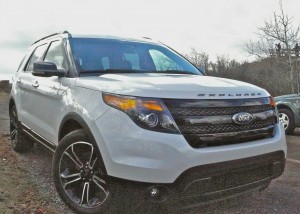
Ford, Mazda and Volvo were closely aligned affiliates for years, but all are doing well on their own.
By John Gilbert
When Ford Motor Company owned Volvo and had a solid percentage of Mazda a decade ago, all three seemed to be thriving, as Ford used those two affiliates in a tight network of platforms and engines that led to some excellent vehicles.
When Ford first brought out the Probe sports coupe, it had a 4-cylinder Mazda engine and a V6 from Ford, and Mazda actually built the car for Ford in Flat Rock, Mich. Later, Ford saw that Mazda was building the Tribute compact SUV, which was exactly what Ford was visualizing, so they collaborated and Ford built both the Tribute for Mazda and the Escape for itself. Mazda supplied Ford with an exceptional 2.0-liter 4-cylinder engine that has evolved into the Ford engine now being turbocharged as the EcoBoost. Ford also brought in the rock-solid Volvo platform to underpin the Edge and the Taurus, and used the same technology for the new Explorer. The very successful European Focus was another example of the global treatment, as Ford equipped its prize compact with the 2.0-liter Mazda engine, and built it on a Volvo S40 platform.
When the economy sputtered, Ford protected its bottom line by divesting itself of its connection to Mazda and ownership of Volvo, and all three went their separate ways. All three continue to build impressive vehicles independently. Ford is doing the best its ever done, making major headlines with its EcoBoost powerplants. Mazda has continued to make breakthrough engines with its new Skyactiv technology. And Volvo has improved its breed, agreeing to be bought by a Chinese holding company that owns Geely, a Chinese car company. All Volvo needs to continue building strong, safe vehicles is financial support, and the Chinese ownership can provide that.
That makes it interesting to take a look at what the three are doing in the midsize SUV market segment, where they used to collaborate.
FORD EXPLORER
The Explorer is generally credited with igniting the move down from the largest SUVs to more maneuverable and more efficient midsize vehicles. Since then, Ford has squeezed the Edge, Flex, and Escape in under the Explorer, so the latest Explorer is larger, as if to bridge the gap from midsize to large.
The Explorer benefits from the EcoBoost plan of using smaller-displacement engines, turbocharg them to reclaim the power of larger alternatives. The enlarged Explorer can range from a 2.0 EcoBoost four, to a 3.5 V6 with 290 horsepower, and all-new for 2013 is the Explorer Sport, a specialty SUV with blacked out grille and lower front fascia, and the 3.5-liter EcoBoost V6.
The Sport 2.0 engine, with twin turbocharging, delivers 350 horsepower and 350 foot-pounds of torque, increasing towing capacity to 5,000 pounds. A 6-speed automatic transmission with steering wheel paddles is well coordinated with Ford’s terrain management system, which seems to be a thinly disguised copy of the system used by Range Rover — another marquee Ford owned but recently sold. Settings for smooth pavement, foul weather, and even off-road terrain are available at the twist of a console knob. The Sport package also has a stiffer suspension with specially tuned steering, and unique 20-inch wheels. Read more


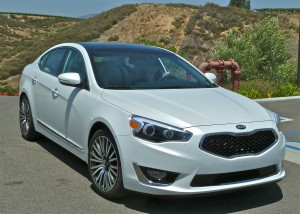

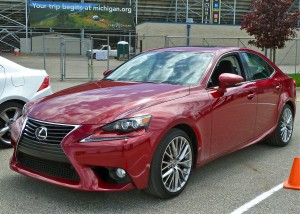


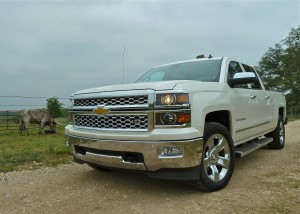


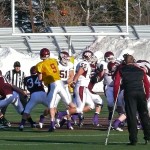
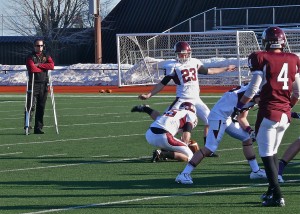
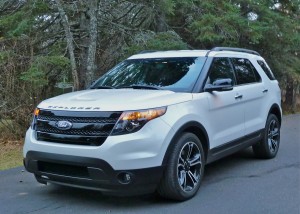
 John Gilbert is a lifetime Minnesotan and career journalist, specializing in cars and sports during and since spending 30 years at the Minneapolis Tribune, now the Star Tribune. More recently, he has continued translating the high-tech world of autos and sharing his passionate insights as a freelance writer/photographer/broadcaster. A member of the prestigious North American Car and Truck of the Year jury since 1993. John can be heard Monday-Friday from 9-11am on 610 KDAL(www.kdal610.com) on the "John Gilbert Show," and writes a column in the Duluth Reader.
John Gilbert is a lifetime Minnesotan and career journalist, specializing in cars and sports during and since spending 30 years at the Minneapolis Tribune, now the Star Tribune. More recently, he has continued translating the high-tech world of autos and sharing his passionate insights as a freelance writer/photographer/broadcaster. A member of the prestigious North American Car and Truck of the Year jury since 1993. John can be heard Monday-Friday from 9-11am on 610 KDAL(www.kdal610.com) on the "John Gilbert Show," and writes a column in the Duluth Reader.